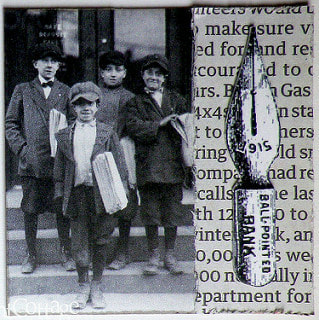WEBMD BLOGSWEBMD DOCTORS |
It’s been a half year since we started wearing masks and other face covering to guard against the new coronavirus. Yet confusion and controversy still surround masks.
The good news is that experts are learning more every day about how and how much facial coverings safeguard you and those around you.
Do Masks Actually Work?
In a word, yes. Remember that we primarily protect others, not ourselves, when we cover our faces. And other people’s masks shield us from their respiratory droplets.
A growing number of studies show that when entire communities mask up, the virus loses its power to spread from person to person. That’s especially important now that studies suggest that large droplets from coughs or sneezes aren’t the only way to transmit the virus. It may also happen when we talk or breathe heavily and exhale aerosols, which are lighter, smaller particles that can hang in the air for much longer and travel farther than socially distanced 6 feet.
Two unwitting hairstylists in Missouri demonstrated the protective power of masks when they went to work for days despite showing symptoms of COVID-19, the disease caused by the new coronavirus. None of the 139 customers and others they came into contact with caught the virus. The reason? The stylists and all their clients covered their faces the entire time in the salon
When and Where Should We Mask Up?
It’s a good idea to wear a mask unless you’re alone or isolated with your family. So cover up if you’re in these “three Cs”:
Crowded places. Staying 6 feet apart may not be safe or possible if people are packed around you. That goes for both indoors and outdoors:
- Restaurants and bars (it’s probably best to keep your mask on between bites and sips)
- Gyms (keep your face covered during all exercises)
- or exercising outside is probably safe even without a mask. But if you’re nervous about someone huffing and puffing past you, by all means put your mask on for an extra peace of mind.
in your backyard or porch, going without a mask might be OK if you have just one or two guests. But it's still important for everyone to keep their distance.
Closed spaces.
This is especially important in poorly ventilated rooms. Open windows and good airflow let outside air in, which helps lower the concentration of airborne viruses. Places to watch for include:
- Offices
- Schools
- Churches
- Grocery stores
- Elevators
- Hair salons
- Your home, if you live with someone who has COVID-19
- Masks are a necessary safety accessory whenever you get up close and personal with anyone outside your “safety bubble.” That includes when
you: - Hug and kiss
- Talk close face-to-face
- Have sex or get intimate
First, any type of covering is probably better than no covering at all.
We are still learning about how well different mask styles and materials work. But we do know that there are three key factors for effectiveness.
Right fit.
This means tightly covering both your mouth and nose. And be sure to leave it on; a mask that dangles by the loop from your ear is a useless mask. It should fit snugly over the bridge of your nose down to your chin. Any gaps will let droplets and aerosols escape. Take care not to touch the mask itself when you put it on and take it off to avoid contamination.
Fabric.
Lab studies show that tight weaves are best for filtering microscopic viral particles. If you can see individual fibers when you hold the mask up to a light, the material likely is too thin and loosely woven. Pure cotton is better than synthetic material such as polyester. The CDC recommends masks with at least two layers. Homemade ones are one choice. You can add a coffee filter in between to boost filtration. Masks with a wire that you pinch over the bridge of your nose may keep your glasses from fogging.
Breathability.
If you can’t breathe well through your mask, chances are you are not going to use it. Some materials are great at blocking particles but may be uncomfortable to wear. And even if you can tolerate, say, a layer from a vacuum bag, do some research. Some HEPA (high-efficiency particulate air) filters have fiberglass, which is harmful if you inhale it.
How Often Should I Wash Cloth Masks?
It’s best to launder after each use. Use soap or detergent and hot water. You can air dry it. Just make sure it’s fully dry before donning it again. Damp fabric makes it hard to breathe through and may encourage bacterial growth.
Which Is Better: Gaiters or Face Shields?
Neither, at least when compared to cloth masks. Gaiters are a tube of fabric that hangs on your neck and which you pull up over your mouth and nose. They’re probably better than going barefaced. Researchers don’t really know how much protection gaiters offer. Plastic face shields may be even less protective. Without a mask underneath, it’s unclear that a shield alone can keep people safe.
Should I Get Medical-Grade Masks?
Two main ones are surgical masks and N95 masks. Both are meant to be disposable.
Surgical masks are often blue and pleated. They’re designed mostly to contain large droplets and spit from your mouth and nose from reaching other people.
N95, on the other hand, are tight-fitting respirators that protect both the wearer and those near them. You don’t need an N95 mask unless you regularly are near people who have COVID-19.
If you are a front-line worker in a school, grocery store, airplane, or similar places, the CDC advises that you wear a reusable cloth face mask to stay safe.
Some N95 masks and reusable masks have exhalation valves or vents to make breathing easier. But those aren’t recommended because they can release your viral particles into the air. That raises the risk of getting others sick if you’re positive for COVID-19.
WebMD Blog
© 2020 WebMD, LLC. All rights reserved.



 RSS Feed
RSS Feed